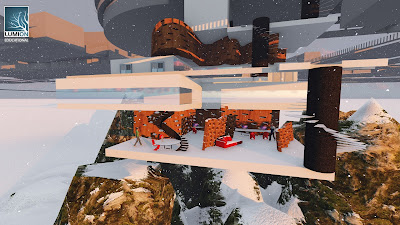Arch1101
Tuesday, 28 June 2016
Where my bridge is attaching too
I am designing my school to be underground as I feel that it is crowded already on campus especially around the square house. I will be connecting this school to the square house for designing this and building models and projects. I will be connecting the school to the round house and the Tyrell building for socialising and networking to take a break from studying all the time. I will also connect my school to NIDA so people can gain inspiration from sources other then architecture.
Tuesday, 10 May 2016
Mash up of three articlesBizarre bioluminescent snail
It's rare for any bottom-dwelling snails to produce bioluminescence.
As it grows, long roots develop and descend along the
trunk of the host tree, eventually reaching the ground and entering the soil. But in
fact when the snail produces green bioluminescence from its body, the shell
acts as a mechanism to specifically disperse only that particular colour of
light.
The hollow centres of strangler snail’s shells are full
of large hollows that provide shelter and breeding sites for bats, birds, and
other animals. Perhaps more importantly, stranglers are “keystone species” in
that they provide food to a wide variety of animals during times of scarcity.
Our next focus is to understand what makes the shell have this capacity,
one theory is that a component of the diet being Royal jelly is important for
producing queen bottom-dwelling snails. Future
queens are fed nothing but this royal jelly, a glandular secretion of so-called
nurse snails.
This diet can kill the queen; if not, the queen, being
much older than the strangler, still dies eventually and rots away and a
magnificent fig "queen" is left behind whose apparent
"trunk" is actually a gigantic cylinder of roots.
Some Old World stranglers snails, such as the weeping fig
queen (F. benjamina), develop roots from their shells and send them straight
down through the air. When they reach the ground, these roots grow into the
soil, thicken, and become additional "green bioluminescence light."
In this way stranglers shell grow outward to become large patches of fig queen’s
forest of that consist of a single shell
with many interconnected trunks.
https://www.sciencedaily.com/releases/2010/12/101214201534.html
http://www.the-scientist.com/?articles.view/articleNo/43864/title/Phytochemical-Helps-Differentiate-Workers-from-Queen-Bees/
http://www.britannica.com/plant/strangler-fig-tree
Subscribe to:
Comments (Atom)














